ROG Strix GeForce RTX 3050 OC
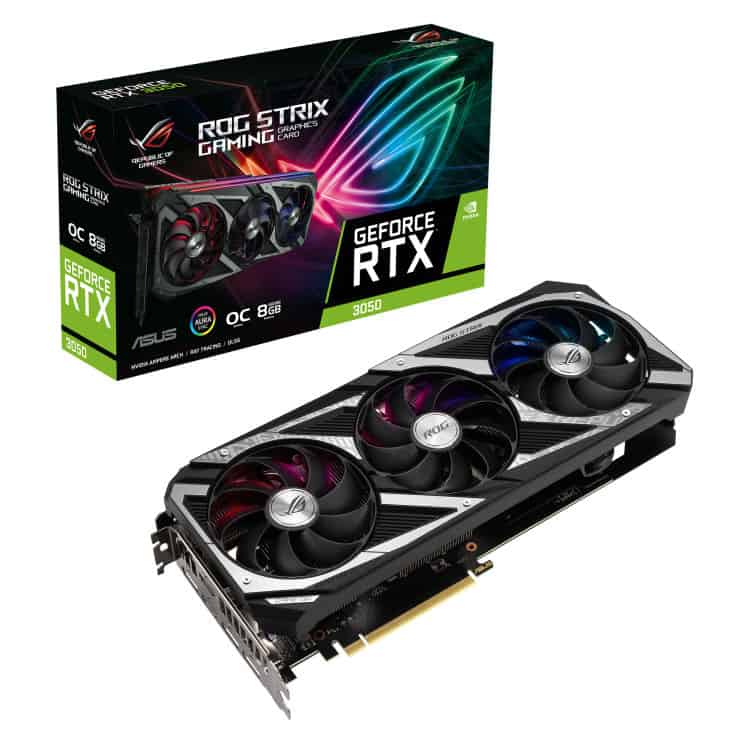
RGB personalization
Great build quality and design
Solid performane and overclocking
Quiet thermal design
More expensive option
How much difference is there between the two cards?
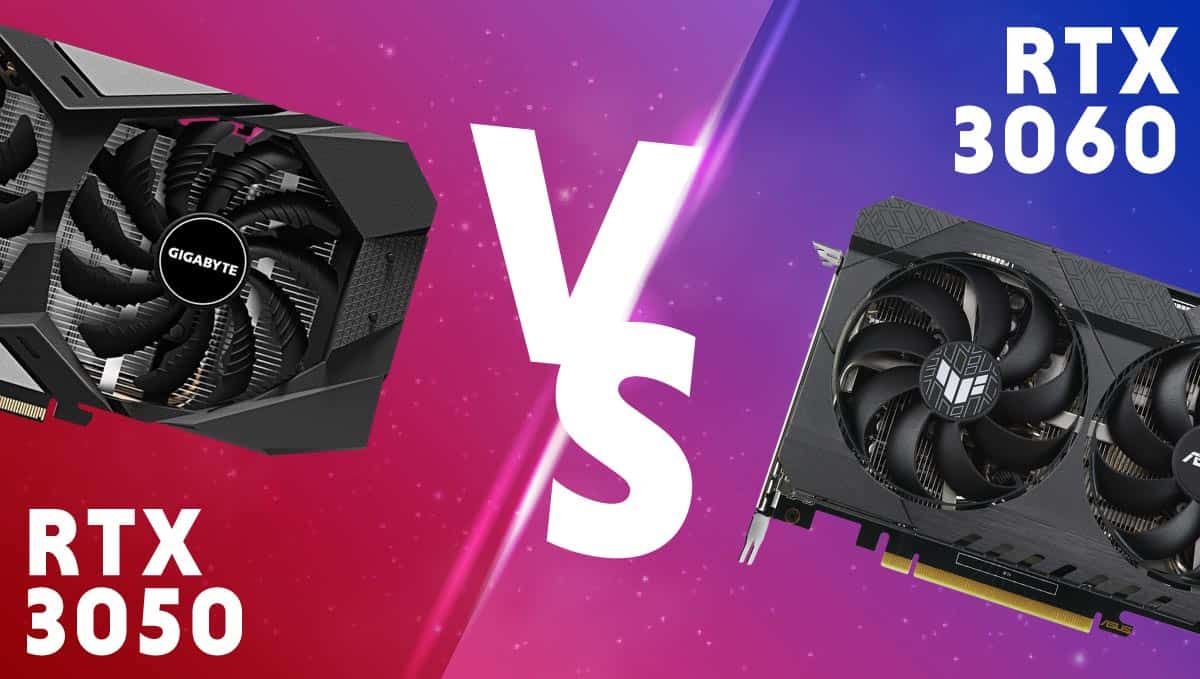
WePC is reader-supported. When you buy through links on our site, we may earn an affiliate commission. Prices subject to change. Learn more
Right at the bottom of Nvidia’s lineup, there are a few entry cards to pick from. So we do compare how well the RTX 3050 vs 3060 hold up against each other. With choice between the two, it can be hard to pick. So we go through what each of them has to offer and how they line up to make a choice of the best graphics card.
Being from the same generation we don’t expect to see much difference between them. Just a different cut in dies to hit different performance and price levels. While the RTX 3060 came out a few months after the initial lineup in February 2021. The 3050 was even later, coming in over a year after January 2022. So the cheaper cards coming in as a later addition to the series.

RGB personalization
Great build quality and design
Solid performane and overclocking
Quiet thermal design
More expensive option
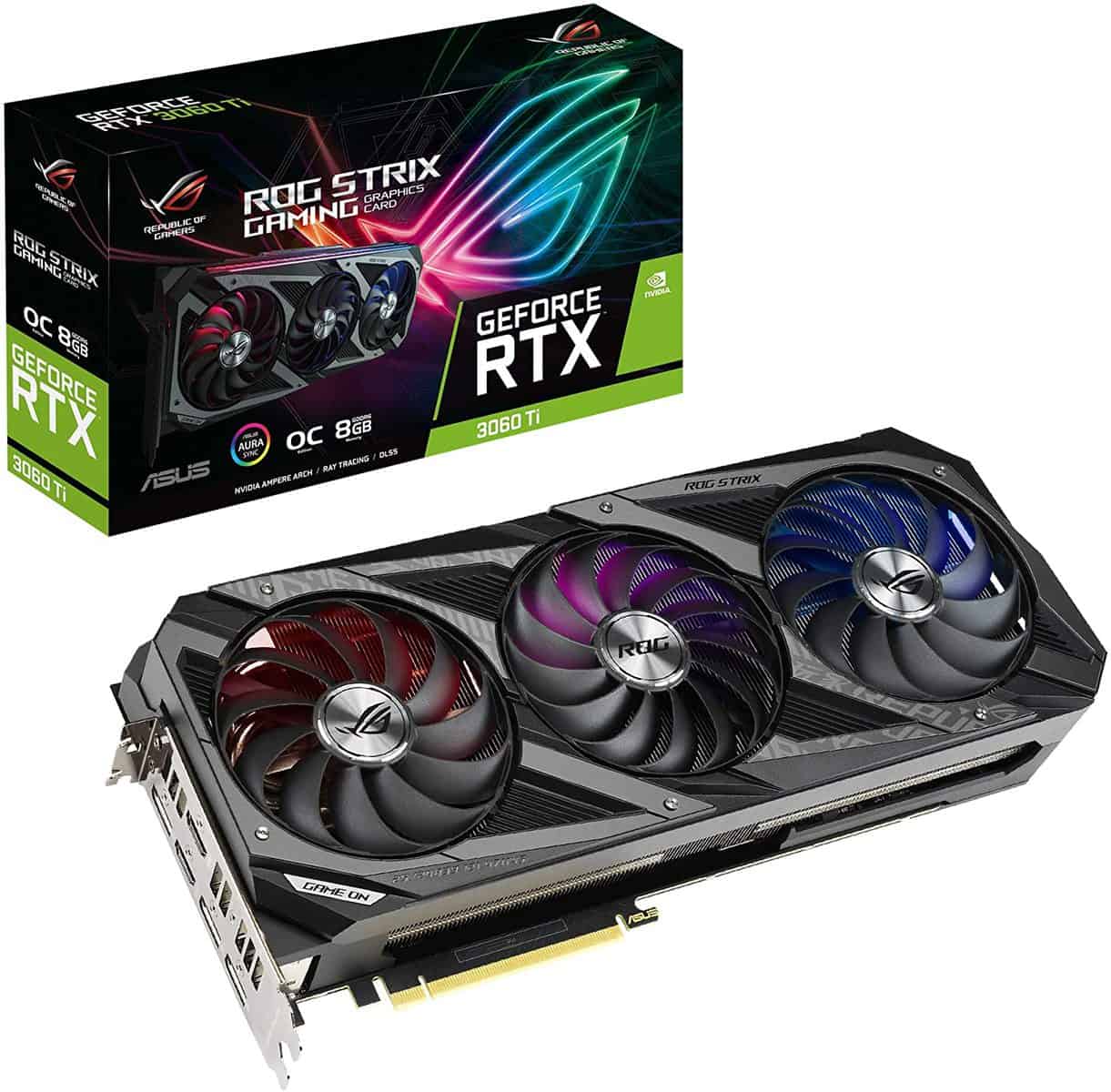
Excellent aesthetic design
Great cooling solution
High boost clock speed
On the higher end of the price spectrum
Both of these cards are based on the same architecture. Created on the Ampere build from Nvidia, all RTX 30 series do feature it. It is the way the GPUs are made and function to produce the graphics you get to enjoy. So it’s down to how much they have to cause the differences between them.
So we compare how much they have in them from a selection. In fact, the 3050 is a cut-down version of the 3060 which can come from some areas of the die not working so it is salvaged for a lower performance option.
The 3050 sports a GA106-150 variant. Whilst the 3060 is a GA105-300, double that of its lower level option. The fact they are the same die with the same process and size. With Samsungs 8nm process they have 12 billion transistors, making the dies 276mm² in size.
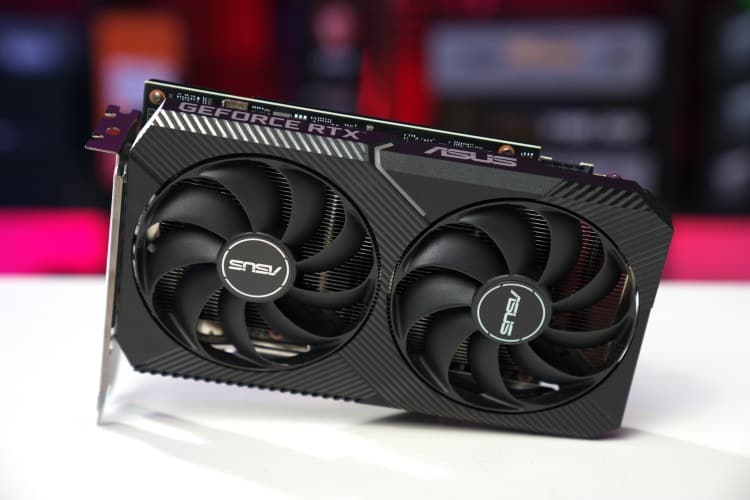
| RTX 3050 | RTX 3060 | |
|---|---|---|
| GPU | GA106-150 | GA106-300 |
| CUDA cores | 2,560 | 3,584 |
| RT cores | 20 | 28 |
| TMUs | 80 | 112 |
| Memory | 8GB GDDR6 | 12 GB GDDR6 |
| Base clock | 1,552 MHz | 1,320 MHz |
| Boost clock | 1,777 MHz | 1,777 MHz |
| Memory clock | 14 Gbps | 15 Gbps |
| Card bus | PCIe 4.0 x8 | PCIe 4.0 x16 |
| Memory bandwidth | 224.0 GB/s | 360.0 GB/s |
| TDP/TBP | 130 W | 170 W |
There are some other alterations between the two graphics cards as well. These do alter the other aspects of performance and offer some other considerations for them. So we inspect what they do and how they differ.
These are the cores running inside the die. They process instructions to create the graphics you get to see on your display. There are certain specializations of cores that work in parallel to work on different areas of the scene to put together in the end. In particular, we have shaders for shadows and shading, RT cores for real-time ray tracing, and TMUs for creating 3D objects.
Comparing the 3050 vs 3060, we see where the cutdown of the die occurs. With CUDA core count decreasing from 3,584 in the 3060 to 2,560 in the 3050. Whilst the RT core count falls from 28 to 20. And the TMUs go from 112 down to 80. Overall decreasing the performance possibilities.
VRAM is the in-between buffer between your display and graphics card. Once it has been created it stays there to enable and smooth gameplay experience with lower latencies. It is also important in terms of size for larger resolutions, as they have higher pixel counts to take up.
Another drop in specification between the two is the VRAM of the cards. Although they use the same GDDR6 memory, the capacity decreased from 12 GB to 8 GB from 3060 to 3050. The memory clock and bus also decrease from 15 Gbps to 14 and 192-bit to 128. This means the overall bandwidth goes down from 360 GB/s to 225. Impacting overall higher resolution performance.
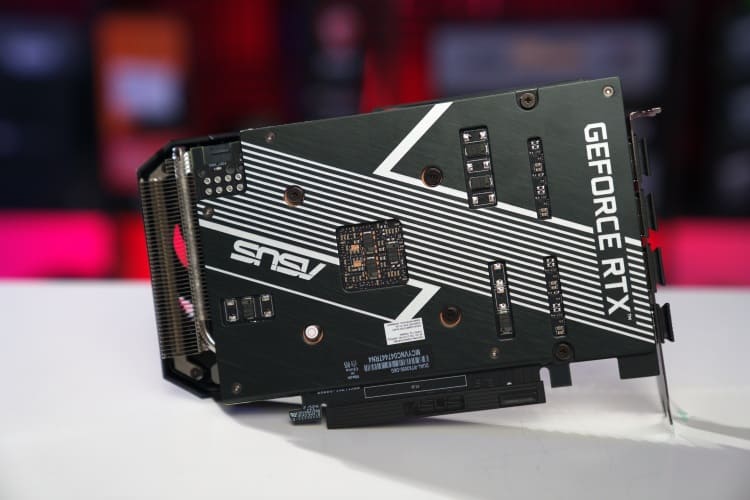
Also known as the frequency it is a measure of how quickly the cores process instructions. It is the speed of the silicon crystals flipping orientation. Which is how it does the work to make scenes, but they are limited with speed and energy. But overclocking the spec has become a popular choice for end users to push cards to their limits.
Between the two cards, we do see a similar rate. With the boost clock the same at 1,777 MHz. Where the difference comes from is the base clock. There we see the 3050 has a higher clock at 1,552 MHz instead of 1,320 MHz.
Another difference between the 3050 vs 3060 is the TDP. This is how much energy the card will consume at max utilization. This also translates to the amount of heat produced by the card as the energy is consumed it is converted to heat. There we see a saving of 40 W of power in the less powerful card that is rated for 130 W instead of 170 W. This does mean it will save you in electricity costs and in the summer heat as long as it has the performance you need.
First, we look at the pure graphics performance of the cards. For that, we look at the 3DMark benchmarks. These give us a good comparison of what they can achieve. For the 3060 we see a score of 8,766 with a ratio of 26. Whilst the 3050 achieves a score of 6,224 with a ratio of 24. A 40% uplift from, the lower spec card.
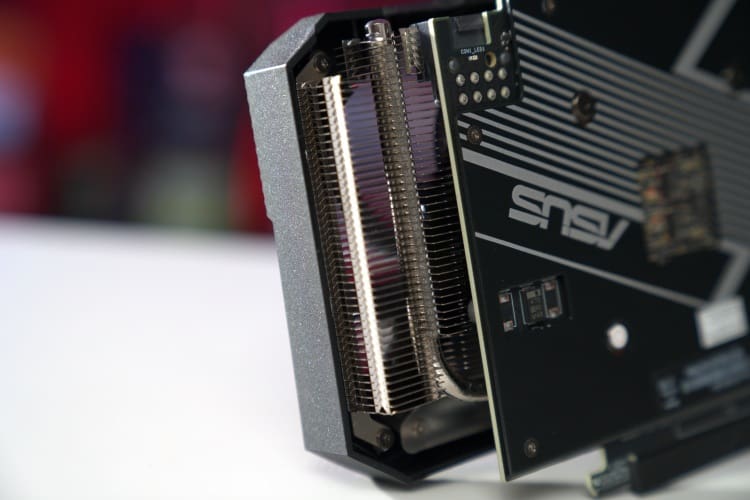
Whilst in gaming we look to TechSpot’s review for what the cards can achieve. There we see the 3060 achieve an average framerate of 141 at 1080p in 12 games. Whilst the 3050 achieves 108, a difference of 23%. This is repeated at 1440p as well with the 3060 averaging 100 FPS, whilst the 3050 gets 74. A 35% difference between the two cards but still a respectable performance from the lower card.
Although the performance might be a bit more significant the cost of the cards is represented in that. We compare the 3050 vs 3060 MSRP and see what they were marked as for sale. And at its launch, Nvidia set a price of $329 USD/£299 and the 3050 was set to $249 USD/£239. A 32%/25% difference that tracks the performance difference of the two cards.
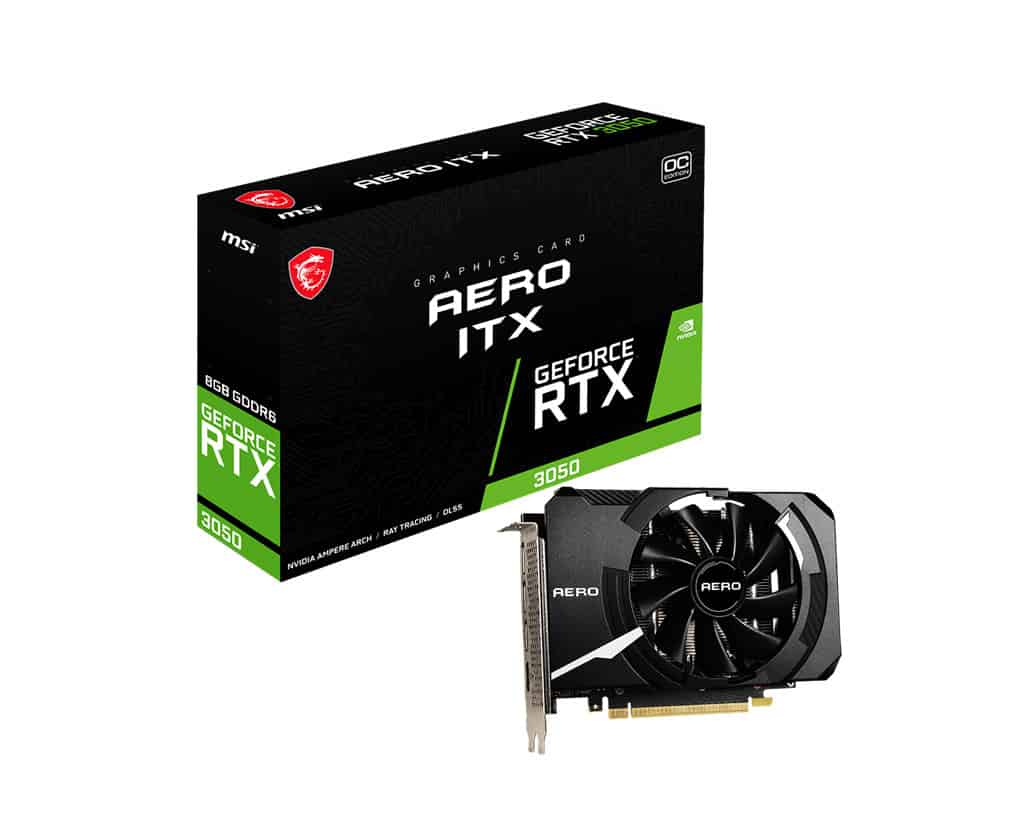
Compact ITX design
RTX and DLSS capability for cheap
Budget friendly and powerful
Limited overclocking capabilities
Potential for thermal throttling
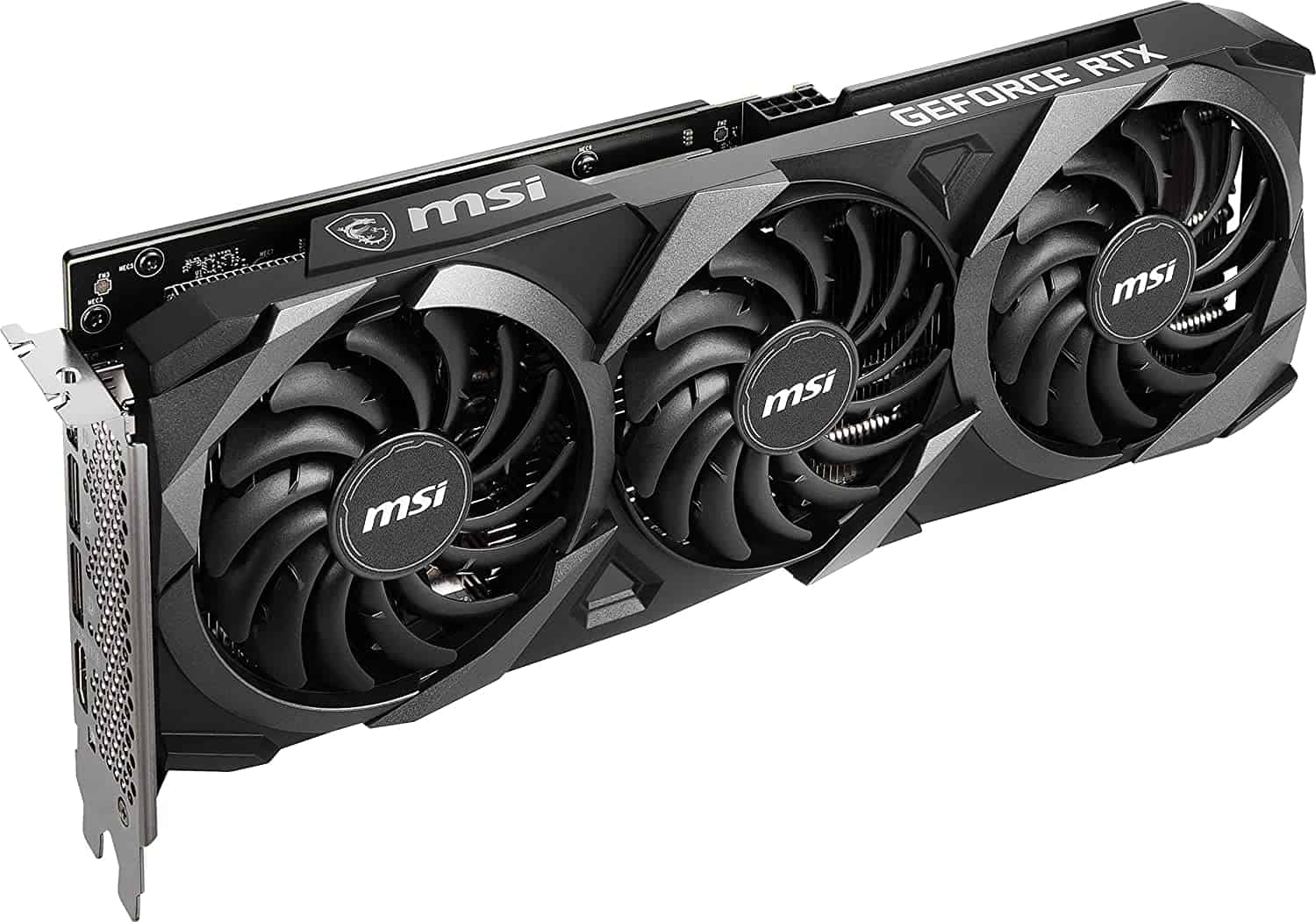
Stylish, gaming aesthetics
Strong materials and build design
High-end cooling solution
On the expensive side
Overall, comparing the 3050 vs 3060 we see a 23-35% difference between the cards. The 3060 taking a bigger lead for higher resolutions. But it does also cost 32% more than the lower power card, so it’s down to your use cases. If 1080p performance is all you need then the 3050 is all you need with access to plenty of Nvidia technologies. But pushing further and higher a 3060 is the better choice.
In pure graphical performance power, the 3060 is 40% better than the 3050 in 3DMark. Whilst in gaming it also leads by 23% in 1080p and 35% in 1440p on average framerate.
In terms of clock rates, the two cards have the same boost clock of 1,77 MHz. With them both based on the same GPU die, the base clock is what differs. With the 3060 having an 18% slower base clock than the 3050.